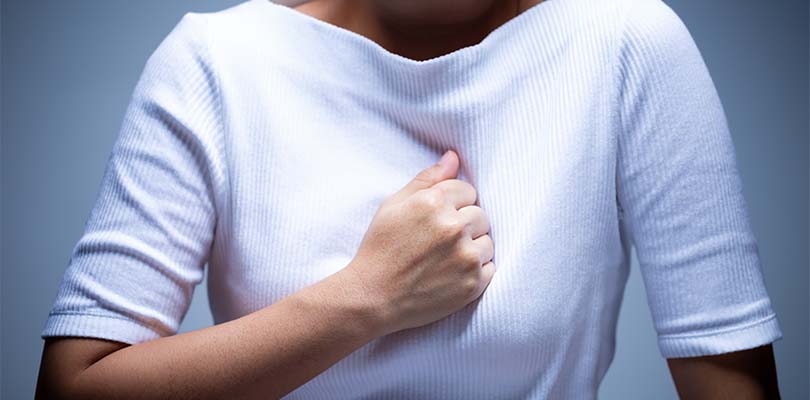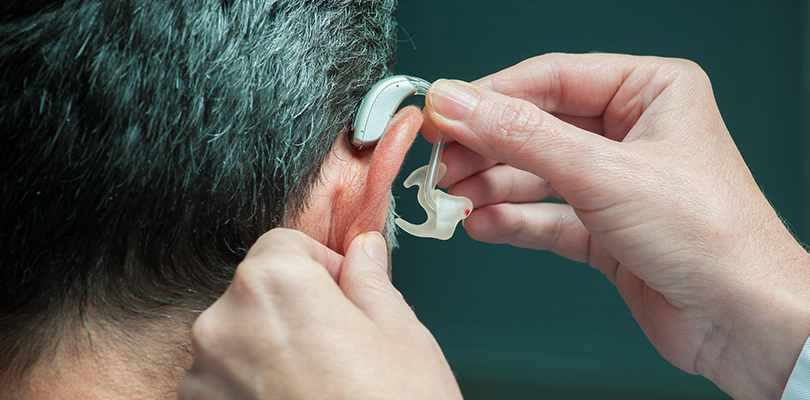How to Tell if a Woman Is Experiencing a Heart Attack
We expect body parts to show their age as we grow older—it is a part of the unspoken agreement with having a long life. As women, our bodies send different warning signals than men when there is an issue in our bodies, including when we have a heart attack. Since the warning signs of a heart attack in women are different compared to men, it is good to know what the symptoms are and how to catch them early.
What Is a Heart Attack?
All parts of your body need oxygen and the heart is no exception. Your heart is responsible for sending oxygenated blood throughout the body as well as to itself. If the blood flow delivering oxygen to the heart is met by a roadblock that does not allow enough oxygen through, it results in a heart attack. These blockages that cause heart attacks happen due to the slow accumulation of fat, cholesterol and plaque in the arteries.
How Heart Attacks Are Different in Men and Women
In the grand scheme of things, the body mechanics of men and women operate quite similarly, albeit with some differences here and there. Heart attacks are different in men and women for a variety of reasons.
Subtle Symptoms
Women’s bodies may start to exhibit warning symptoms weeks or months ahead of the heart attack itself. With such a lag in time, it is easier shrug off symptoms rather than look into them further, especially if they mimic the symptoms of acid reflux, the flu, or normal aging. While men have more typical symptoms of central chest pain, women are more likely to experience shortness of breath, pressure in the lower chest, upper back pressure, fatigue, or light-headedness.
Arm Pain
During a heart attack, men are more likely to feel pain in the left arm. In women, pain can be felt in either arm.
Age
The average age for a man to have his first heart attack is 65 years old. The first heart attack for women is around age 72. An explanation for this age gap is possibly due to estrogen’s effect on blood vessels.
Medical Attention and Treatment
Possibly as a result of subtle symptoms, women generally do not reach out to a medical professional as quickly as men, and women are less often referred for appropriate treatment. Following a heart attack, women are less likely to engage in therapies, like blood pressure medication, which generally means their outcomes following a heart attack are worse than men.
Location of Heart Disease
Adding to the reasons why women’s symptoms may mask heart disease, women and men experience heart disease in different areas. Women’s heart disease is usually found in the smaller blood vessels of the heart (microvascular disease), while in men, heart disease is more likely in the major coronary arteries.
Warning Signs of a Heart Attack in Women
There is a window of time prior to a heart attack that women can recognize that they should check in on their health. If you experience these symptoms you will want to get a checkup:
- Chest discomfort
- Shortness of breath
- Cold sweats
- Nausea
- Light-headedness
- Fatigue
- Indigestion
- Anxiety
- Discomfort in the shoulder area, headaches and vision problems
Symptoms of a Heart Attack for a Woman
The most common symptom of a heart attack is chest pain or discomfort, but actual heart attack symptoms may not be related to chest pain at all. Symptoms during a heart attack can be:
- Pain in the back, jaw, or neck. When there are heart issues, nerves in that area are triggered, but you may feel the pain elsewhere. Pay particular attention if the origin of the pain is hard to pinpoint (you are not feeling the pain in a specific muscle or joint).
- Intense fatigue. When simple activities make you excessively exhausted, you may be having heart distress.
- Breathing difficulties. Notice when you cannot catch your breath or breathing worsens when lying down and improves when you are propped up.
- Sweating. You start to sweat without reason, or you feel cold and clammy.
- Arm pain. Pain or discomfort may come from one or both arms.
One of the most frustrating and troubling concerns associated with aging is memory loss. Learn what the causes of memory loss with age are here.
Heart Attack Treatment Options
The earlier you treat your heart issues, the better chance you have to nip the problem in the bud before it becomes a heart attack. Effective heart attack treatment options are performed by medical professionals.
Medications
With a heart attack, blood thinning medications or medications that dissolve or prevent blood clots are given by the doctor to help maintain blood flow through the affected artery. A doctor may use aspirin, thrombolytics, antiplatelet agents, or heparin.
Other medicine that may be used is nitroglycerin, as it dilates blood vessels to improve blood flow and is also used to manage chest pain. Beta blockers take pressure off the heart by relaxing heart muscle, slowing the heartbeat and decreasing blood pressure. ACE inhibitors also lower blood pressure.
Surgical and Other Treatments
Coronary angioplasty and stenting are commonly used in a surgical procedure for heart attack patients. A catheter tube goes to the site of the artery blockage. There is a balloon on the catheter that inflates briefly to open the blocked coronary artery, where a mesh stent may be inserted. This stent keeps the artery open long term to restore blood flow to the heart.
There’s also coronary artery bypass surgery. This is where the veins or arteries are sewn in place beyond the blocked coronary artery allowing a different route for blood to flow to the heart (and bypassing the blocked section).
Also, cardiac rehabilitation is used. Following a heart attack and surgery, there are programs available that focus on heart medications, lifestyle changes, emotional issues and how to safely return to your normal activities.
Heart Attack Prevention Tips
There are a few things you can do to keep your heart heathy and track your heart health:
- See your doctor for regular checkups
- Know your health numbers and risk factors like blood pressure, high cholesterol, diabetes, hypertension
- Manage your stress
- Maintain a healthy lifestyle, including diet and exercise
- Quit smoking
In Conclusion
Over 25% of heart attacks in women go unrecognized. Never ignore symptoms, even if they do not appear to be life-threatening—you could save your own life by paying attention to what your body tells you.







